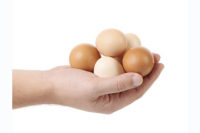The results of a new study from researchers in Belgium suggest that any shift from conventional to alternative housing systems for laying hens should be accompanied by a keen concern for optimizing and maintaining Salmonella surveillance programs, due to an increased risk of bird-to-bird transmission and internal egg contamination in some non-traditional housing systems.
The study, “Effect of Housing on Transmission of Salmonella,” will appear in the July issue (Vol. 90; doi:10.3382/ps.2010-00944) of Poultry Science, said the Poultry Science Association (PSA), which publishes the journal.
According to the study’s lead author, Dr. Jantina De Vylder, Department of Pathology, Bacteriology and Avian Diseases, Ghent University, the researchers sought to quantify the effect of housing systems on the spread of Salmonella infection within a group of layers and on internal egg contamination. They found that aviary and floor housing systems pose a greater risk of bird-to-bird transmission of Salmonella Enteritidis than traditional battery cages and furnished cages. The study also found a higher number of eggs that were internally contaminated by Salmonella in aviary systems, as compared both to cage systems and the floor system.
“We found a slightly higher bird-to-bird transmission rate in aviary systems, and an even more pronounced rate for floor systems in comparison with cage systems. Given that we controlled for a number of other variables that might impact transmission rates, we believe that differences inherent to the housing systems – such as hygienic status, air quality, and more intensive contact between birds in large group-housing – are likely responsible,” said Dr. De Vylder.
The reason for the higher incidence of Salmonella-contaminated eggs in aviary housing systems, the second major finding of the study, was less clear.
“We were unable to establish any relation between the significantly larger number of internally contaminated eggs in the aviary system and either the internal colonization or the faecal shedding status of hens. It’s possible that stress could play a role in the difference, but that’s still speculation at this point,” added Dr. De Vylder.
The article cites an earlier study which found that stress induces some changes in the hen’s oviduct. This, the authors of the Belgian study say, “might create an environment that is more susceptible for Salmonella survival and also might affect the survival of Salmonella in egg albumen.”
Because of their findings, Dr. De Vylder and her co-authors urge that, following a move of laying hens from conventional to alternative housing systems, it is vital for Salmonella control plans to be maintained and for additional care to be taken to minimize within-flock transmission of Salmonella.
Source: PSA






Report Abusive Comment